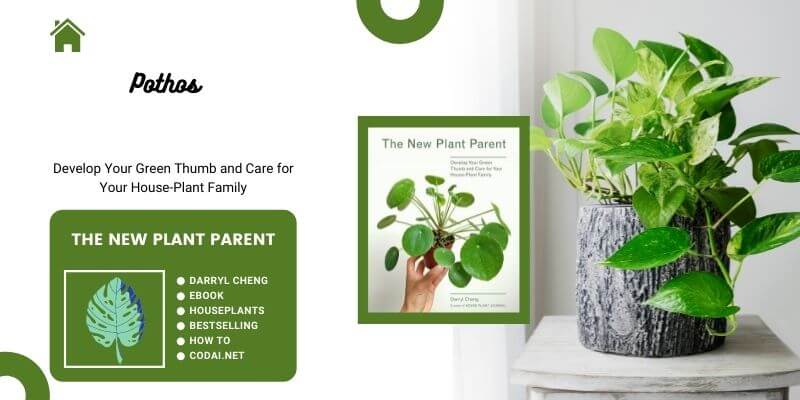[Ebook Việt Hóa] New Plant Parent - Darryl Cheng, Chi Epipremnum - Chi Trầu Bà, Chi Scindapsus
[Ebook Việt Hoá] New Plant Parent (Darryl Cheng) – Phần 02 – Pothos (các loại Trầu Bà thuộc chi Epipremnum hoặc Scindapsus)
- Nguồn: [Ebook] New Plant Parent: Develop Your Green Thumb and Care for Your House-Plant Family – Darryl Cheng
- Biên tập: Dũng Cá Xinh (Tháng 01/2022)
- Dịch: Team Codai.net
English
Pothos
Although it is considered invasive in tropical regions, pothos (Epipremnum aureum), like philodendron, deserves a place in any collection of house plants. The variegated varieties make up what I like to call the Pothos Fab Four: ‘Marble Queen,’ ‘Golden,’ ‘‘N’joy,’ and ‘Neon.’ Sometimes a ‘Golden’ or’ Marble Queen’ pothos may start putting out pure green leaves, which is undesirable if you’re a commercial grower but interesting for a plant parent—you can clip off this pure green vine to create a separate plant of all pure green leaves!
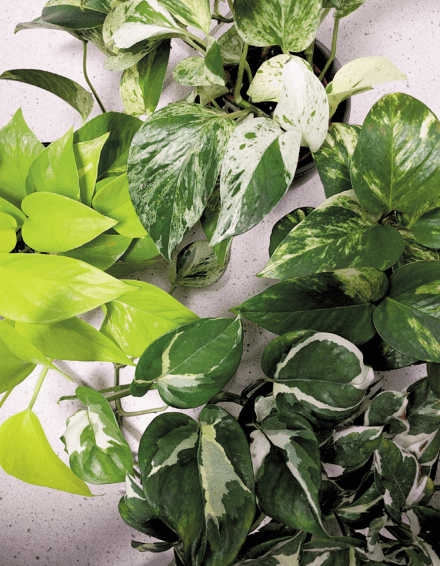
Survival strategy
Pothos can survive in areas receiving no more than 50 foot-candles, but be prepared for a long adjustment period where there will be little to no growth. Bringing the soil to maximum saturation won’t kill the pothos at first, but if you keep it moist, in a few months you might find a fungal infection that causes black spots to form in the middle of leaves. This can be avoided with regular soil aeration.
Growth strategy
From 100 to 300 foot-candles, you’ll get good pothos growth. Above that, variegation will be more pronounced. If you start exposing the pothos to direct sun, you may notice some fading of the green after some weeks—it’s probably best to block direct sun with a sheer curtain. Keep the soil evenly moist, which will give the leaves a perky bounce as you pat them. If the plant starts to wilt, do a quick pour all around the soil surface. When the plant is growing, you can use any fertilizer as directed. Pothos roots will grow quickly, and you should watch out for when they begin to emerge from the pot’s drainage holes. That’s a good sign that a larger pot is necessary. Another is when your plant has been growing steadily for several months and, suddenly, numerous leaves, sometimes on the same vine, become yellow and fall off. This could mean the roots of that vine have rotted. Repotting the plant will effectively reset the soil nutrients and structure.
Subjective life span
The main concern for long-term satisfaction with pothos is the plant’s oldest leaves starting to yellow and fall off, which can be caused by any number of factors, including loss of soil nutrients or root damage from a dry spell. Fortunately, propagation by stem cuttings is very easy, so you can transplant rooted cuttings back into the soil. However, if you repot your plant and refresh the soil in a timely manner, you’ll have it for a long time.
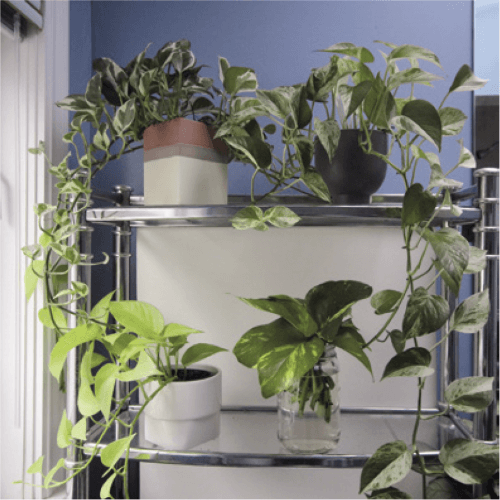
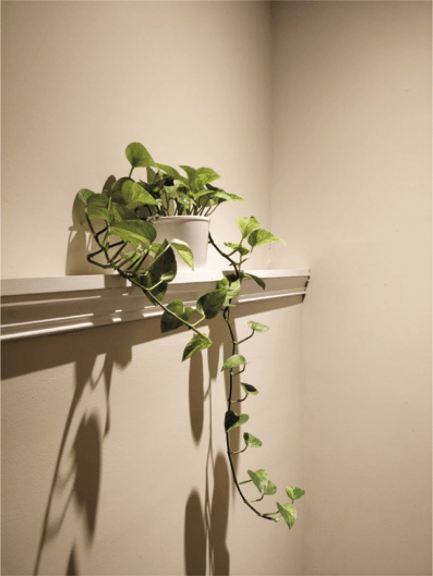
Pothos Propagation
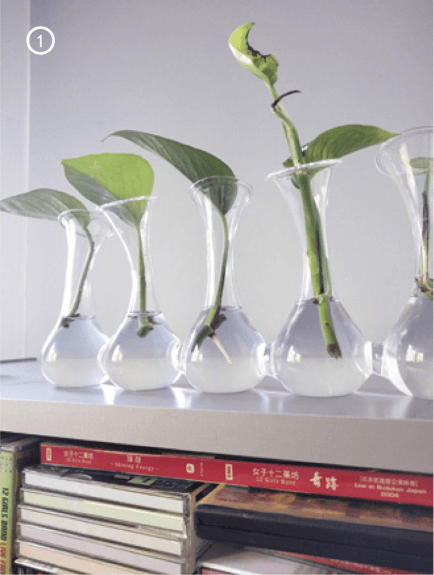
1 – Each pothos vine only grows in one way—longer! So when a vine reaches the floor and you’re not into the jungle look, you can simply cut it with clean, sharp pruning shears, preferably closer to the older leaf. In time, a new growing tip will emerge, and the vine will continue its quest in getting longer. With the healthy leaves you cut off, you can easily propagate more plants. Pothos is a great plant for learning how to propagate, because it roots under almost any conditions. Thanks to its rapid growth (assuming it’s in good light), you can start to make new plants every few months. Here are some jade pothos cuttings rooting in water.
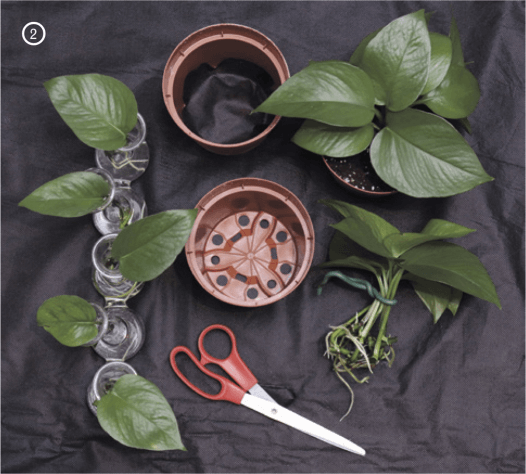
2 – Each cutting should have one leaf, one stem, and one segment of the main vine. You’ll see a brown root node where the stem meets the main vine; this is where new roots will emerge. To get a lot of plants quickly, I bundle a few cuttings together (five to seven) with a soft rubber tie and put them in a glass of water in an area where they will not receive direct sun. As the days go by, I make sure the water remains clear and remove cuttings that turn yellow or brown (this doesn’t happen very often). In a few weeks, white roots are growing from the node, and as soon as I see roots emerging from all cuttings, I transplant them in into a small (4-inch) nursery pot with any standard potting mix. The tie will assist in keeping the stems upright while the roots are establishing themselves. In a few weeks, I remove the tie, as the stems are standing upright on their own. The new plants come in handy if the mother plant has bare stems near the soil that I want to conceal.
Observations from Pothos Parenthood
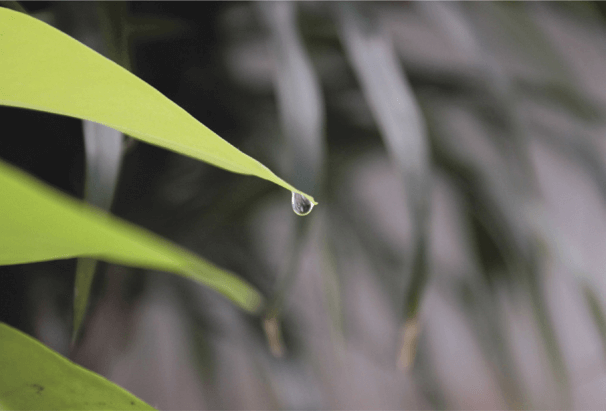
GUTTATION
The water transport mechanism in the pothos is so efficient that excess water can collect at the leaf tips after a thorough watering. Is this a sign that you’re “overwatering”? No, not if your plant is growing!
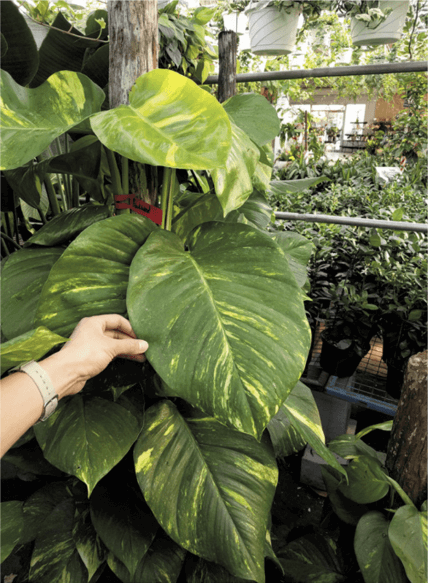
THE TOTEM
An alternative way of cultivating pothos is to let the vines grow onto a rough surface that can hold a bit of moisture, such as bark or a moss pole. Each leaf will become larger than its predecessor. While this may be tempting to try, your success rate will depend on whether you can provide enough light and your ability to keep the rough surface irrigated.

GOLDEN POTHOS
In nature—with heat, humidity, and plenty of rain—a pothos can reach an impressive size that many wouldn’t even recognize. This is a ‘Golden’ pothos!
Tiếng Việt
Đang cập nhật
